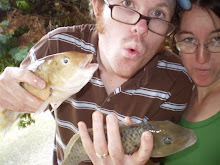In mid-September, Dr John Banks from the Washington State University arrived at Mwamba with three students: Maria, Heather and Jason. Maria and Heather were back for their second Kenyan adventure, returning with John to the Kenyan coast to undertake two research projects in the Arabuko-Sokoke Forest (ASF). The first project was study of the relationship between the abundance of arthropods and the diet of the globally threatened East Coast Akalat. To do so Colin, Albert and a bunch of keen volunteers set up mist nets to catch this rare bird. Across two sites and over four early mornings, we caught a total of eight Akalats, seven of which were obliging enough to leave a fecal sample in the bird bag. These important small parcels were collected in vials and sent to Nairobi for DNA analysis. Initial examination of the deposits under a microscope revealed clear evidence of insect exoskeleton.
Whilst we were busy catching birds in the nets and taking their measurements, the Banks team was using pitfall traps to survey the insects that live in the Akalat’s habitat. Many hours were spent back at Mwamba sorting the bugs and identifying the many species they caught. We are now awaiting the results of the DNA analysis to know whether bugs caught in the pit fall traps were represented in the Akalats’ diet.
The remaining few days were spent developing methodology for an elephant population survey in the ASF. Once again excrement proved to be of much scientific interest, as presence of these very shy elephants is usually only evidenced by the disturbed vegetation and the piles of dung they leave behind. Funding permitting, John hopes to return next year to collaborate with ARK and KWS in a full study of the elephant population (the first in over 10 years).
Monday, October 18, 2010
Subscribe to:
Post Comments (Atom)





No comments:
Post a Comment